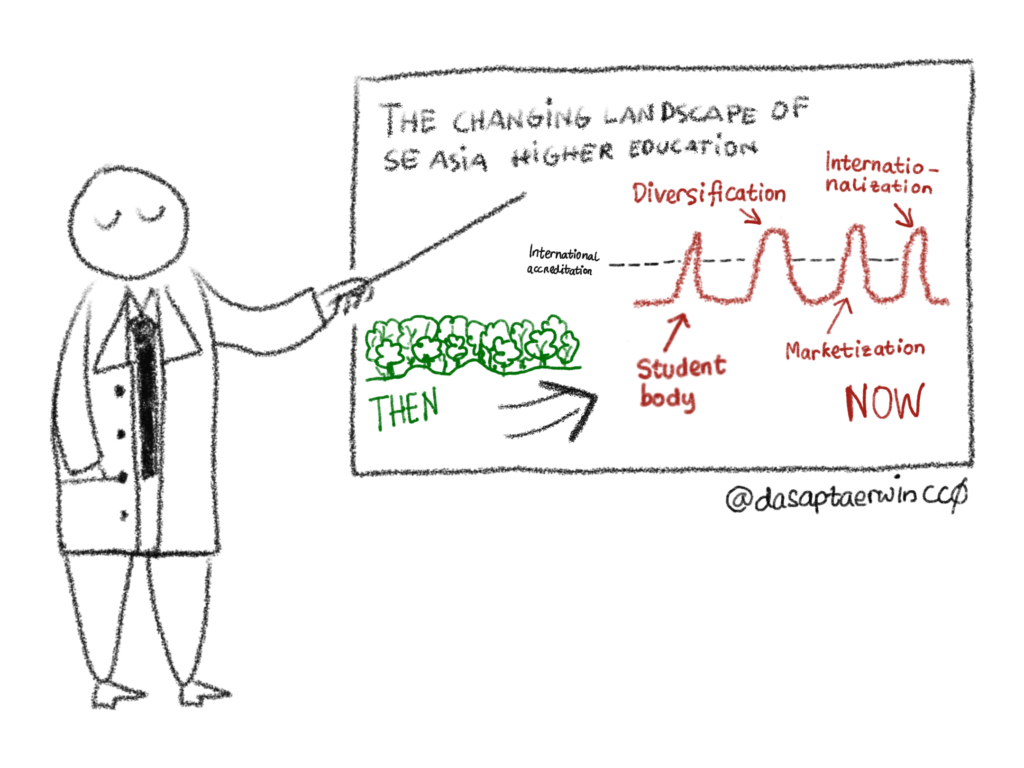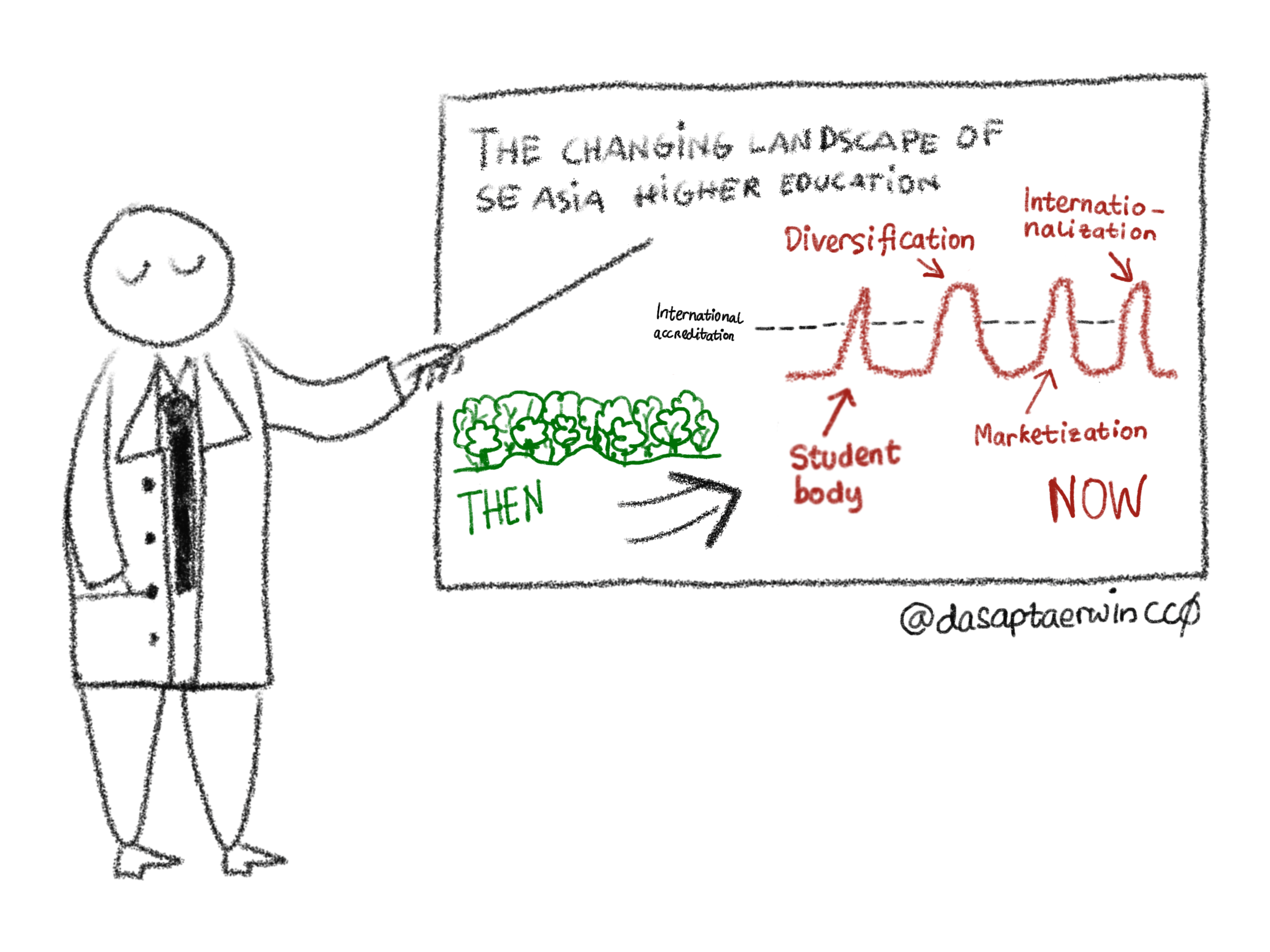The landscape of Southeast Asian higher education is changing rapidly, driven by a number of factors, including:
- Massification: The number of students enrolling in higher education institutions in Southeast Asia has increased significantly in recent years. This is due to a number of factors, including population growth, rising incomes, and an increasing awareness of the benefits of higher education.
- Diversification: The types of higher education institutions and programs available in Southeast Asia have also diversified. This includes the growth of private universities, vocational colleges, and online learning.
- Marketization: Higher education in Southeast Asia is becoming increasingly market-oriented. This is reflected in the rise of tuition fees, the development of new programs to meet the needs of employers, and the increasing focus on employability outcomes.
- Internationalization: Southeast Asian universities are becoming more internationalized. This is evident in the growing number of international students and staff, the development of international partnerships, and the increasing use of English as the language of instruction.

These trends are having a significant impact on the Southeast Asian higher education landscape. For example, the massification of higher education has led to an increase in competition among universities for students and resources. This has put pressure on universities to improve their quality and relevance.
The diversification of higher education has created more opportunities for students to choose the type of education that best meets their needs. However, it has also made it more difficult for students to choose the right institution and program.
The marketization of higher education has made higher education more accessible to students from all socioeconomic backgrounds. However, it has also raised concerns about the quality of education and the affordability of higher education.
The internationalization of higher education has provided students and staff with more opportunities to learn and work in a global context. However, it has also raised concerns about the impact of globalization on local cultures and identities.
